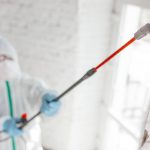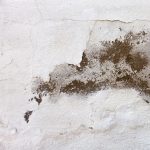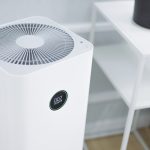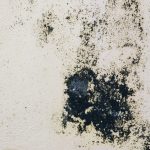
Water damage can happen unexpectedly, whether from a natural disaster, a burst pipe, or a leaking roof. When water invades your home, it’s crucial to act quickly and efficiently to remove it and prevent further damage, including mold growth. Knowing the right equipment to use for water removal can make a significant difference in how effectively and quickly you can restore your home. Here’s what you need to know about water removal equipment.
1. Wet/Dry Vacuums
How They Work
Wet/dry vacuums are versatile machines designed to handle both liquid and solid debris. They are particularly useful for removing small to moderate amounts of standing water from floors, carpets, and other surfaces.
Benefits
- Versatility: Can be used for various cleanup tasks, including water removal, debris cleanup, and vacuuming carpets.
- Portability: Typically lightweight and easy to move around the affected area.
- Efficiency: Effective for quickly removing water from smaller areas.
Professional Insight
At QCI, we often use wet/dry vacuums for initial water removal in smaller, localized areas. They are a critical first step in our water damage mitigation process.
2. Submersible Pumps
How They Work
Submersible pumps are designed to be placed directly in the water and are used for removing large volumes of standing water. They work by pumping the water out of the affected area and expelling it through a hose to a designated drainage location.
Benefits
- High Capacity: Capable of removing large amounts of water quickly.
- Efficiency: Can operate continuously for extended periods, making them ideal for significant flooding events.
- Versatility: Suitable for various water removal tasks, including flooded basements and large pools of water.
Professional Insight
For severe flooding situations, QCI uses submersible pumps to rapidly reduce water levels. These pumps are essential for managing large-scale water damage efficiently.
3. Dehumidifiers
How They Work
Dehumidifiers remove moisture from the air, reducing humidity levels and helping to dry out affected areas. They work by drawing in moist air, cooling it to condense the moisture, and then reheating and releasing the dry air back into the room.
Benefits
- Moisture Control: Essential for preventing mold growth by reducing humidity levels.
- Versatility: Useful in various environments, including basements, crawl spaces, and large rooms.
- Continuous Operation: Many models are designed to run continuously, providing ongoing moisture control.
Professional Insight
QCI uses industrial-grade dehumidifiers to ensure thorough drying of affected areas. These machines are crucial for preventing secondary damage such as mold growth and structural weakening.
4. Air Movers (Fans)
How They Work
Air movers, also known as industrial fans, are used to circulate air and promote evaporation, speeding up the drying process. They are typically positioned to blow air across wet surfaces and create a flow that helps to evaporate moisture.
Benefits
- Speed: Accelerates the drying process by increasing air circulation.
- Coverage: Can cover large areas and be adjusted to direct airflow where it is most needed.
- Complementary: Works well in conjunction with dehumidifiers to enhance drying efficiency.
Professional Insight
At QCI, we strategically place air movers to maximize airflow and ensure even drying. This step is critical for preventing mold growth and further water damage.
5. Moisture Meters
How They Work
Moisture meters are devices used to measure the moisture content in materials like wood, drywall, and concrete. They provide accurate readings that help determine the extent of water damage and monitor the drying process.
Benefits
- Accuracy: Provides precise measurements of moisture levels.
- Monitoring: Helps track the progress of drying and ensures that materials reach acceptable moisture levels.
- Prevention: Identifies areas with hidden moisture that might not be visible to the naked eye.
Professional Insight
QCI uses moisture meters throughout the water removal and drying process to ensure all materials are thoroughly dried, preventing potential mold growth and structural damage.
6. Infrared Cameras
How They Work
Infrared cameras detect temperature differences in materials, which can indicate the presence of moisture. They are particularly useful for identifying hidden water damage behind walls, under floors, and in other hard-to-reach areas.
Benefits
- Non-Invasive: Allows for detection of moisture without damaging materials.
- Comprehensive: Identifies hidden moisture that might be missed by other methods.
- Efficiency: Quickly scans large areas to pinpoint problem spots.
Professional Insight
Infrared cameras are a valuable tool in QCI’s arsenal, allowing us to detect hidden water damage and ensure comprehensive remediation.
Case Study: Effective Water Removal in Cape Coral
A family in Cape Coral experienced significant water damage after a severe storm. They contacted QCI for professional water removal and remediation. Our team arrived promptly, using submersible pumps to remove standing water and wet/dry vacuums for smaller areas. We then deployed industrial dehumidifiers and air movers to thoroughly dry the home. Moisture meters and infrared cameras ensured that all hidden moisture was identified and addressed. Thanks to our efficient use of water removal equipment, the home was restored quickly and effectively, preventing mold growth and further damage.
Knowing the right water removal equipment to use is crucial for effectively managing water damage and preventing mold growth. Each piece of equipment plays a vital role in the water removal and drying process, ensuring your home is restored to a safe and healthy condition.
If you’re facing water damage, don’t hesitate to seek professional help. At QCI, we offer expert water removal and mold remediation services in Southwest Florida, including Cape Coral. With over 28 years of experience, our team is equipped with the latest tools and techniques to handle any water damage situation. Contact us today at (239) 777-2875 or visit our website at QCI Online to schedule a free inspection. Let us help you restore your home and prevent further damage.






